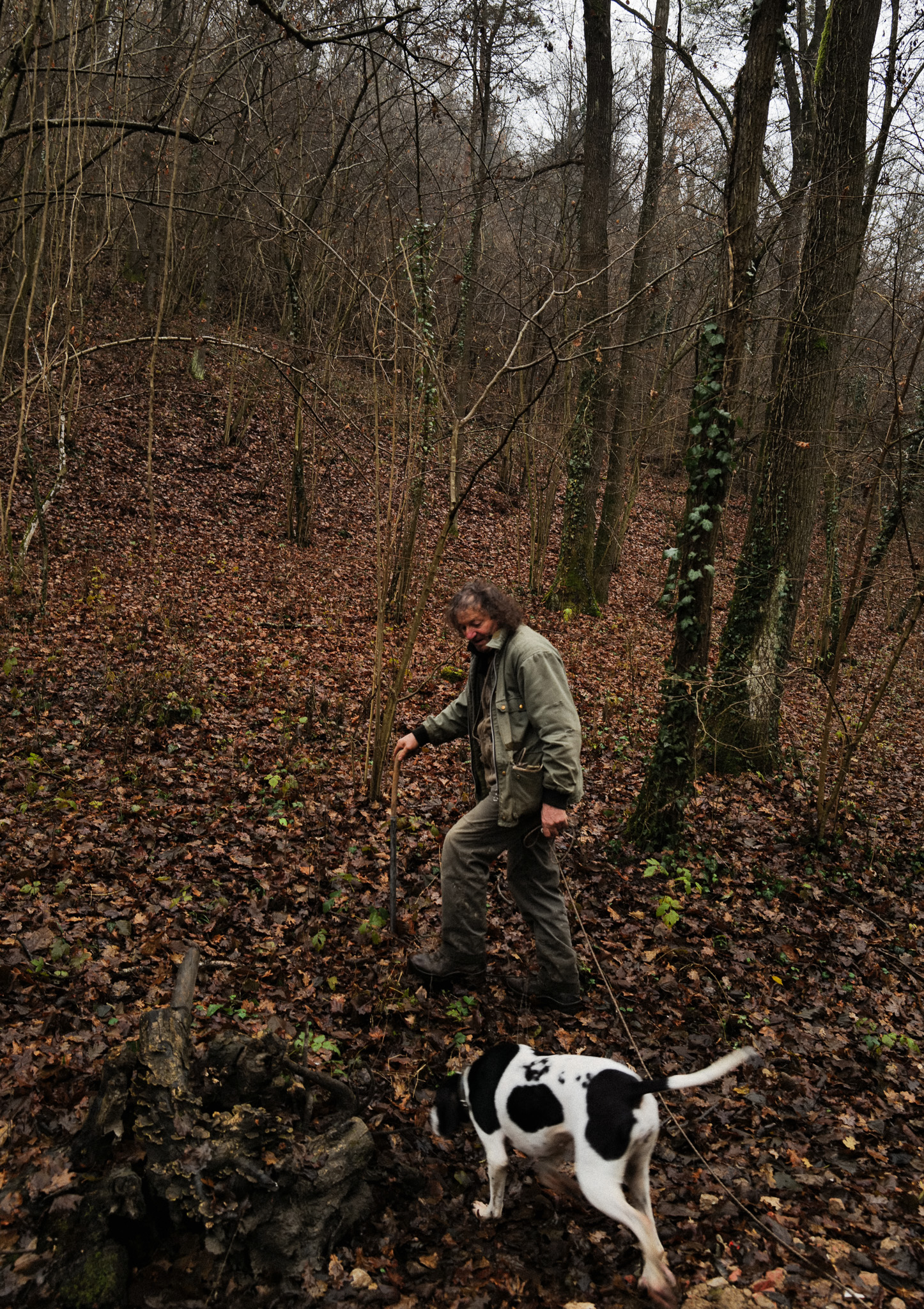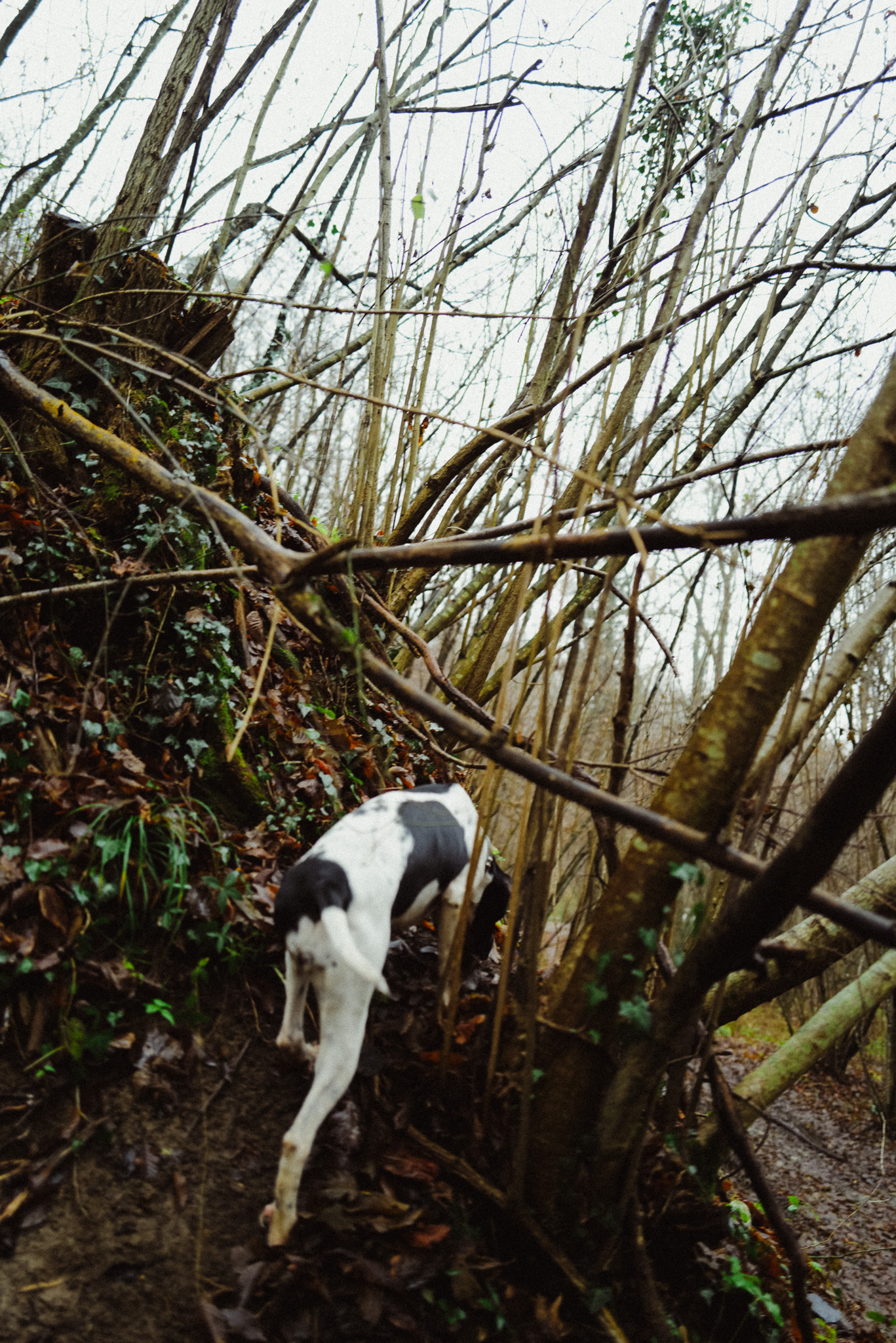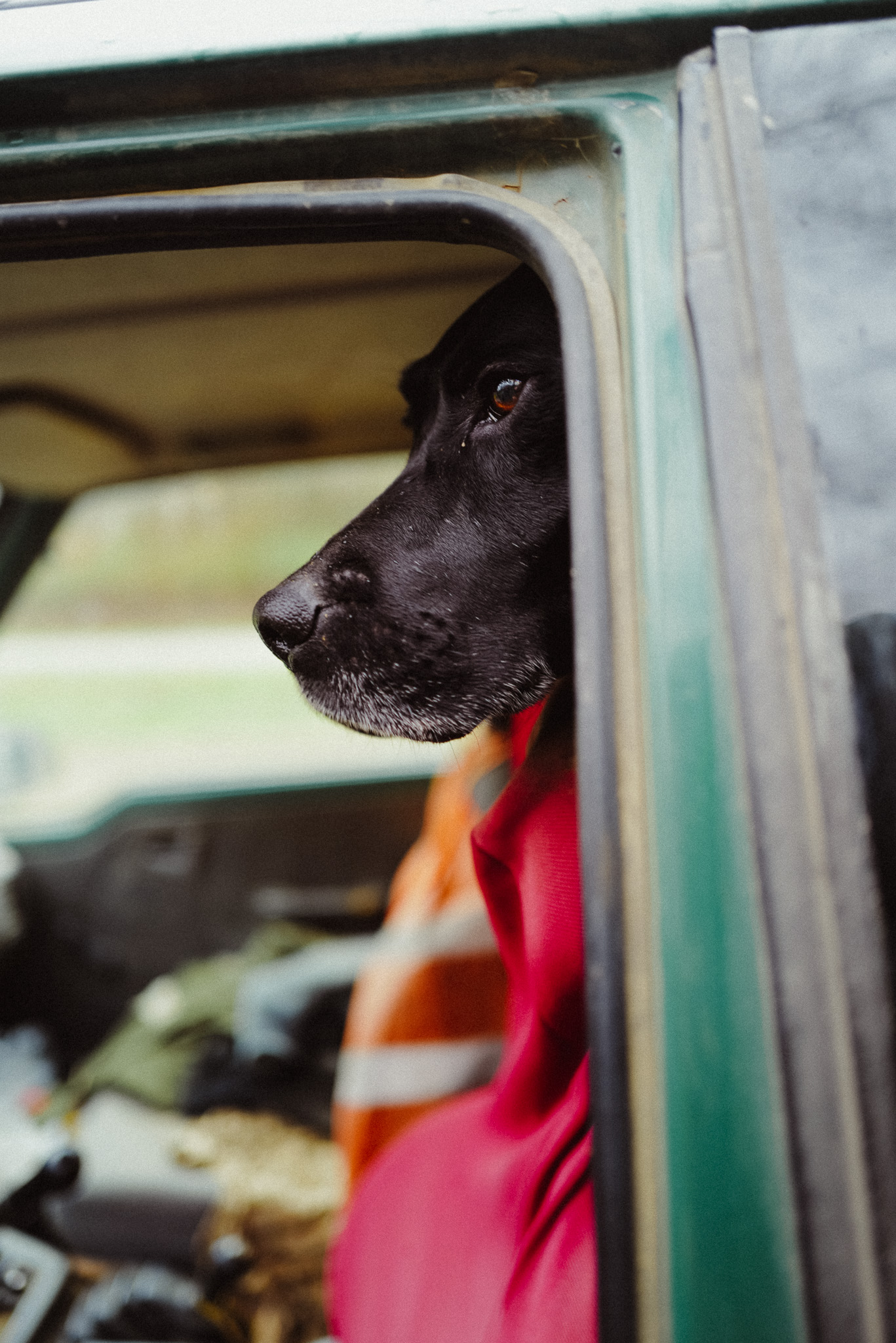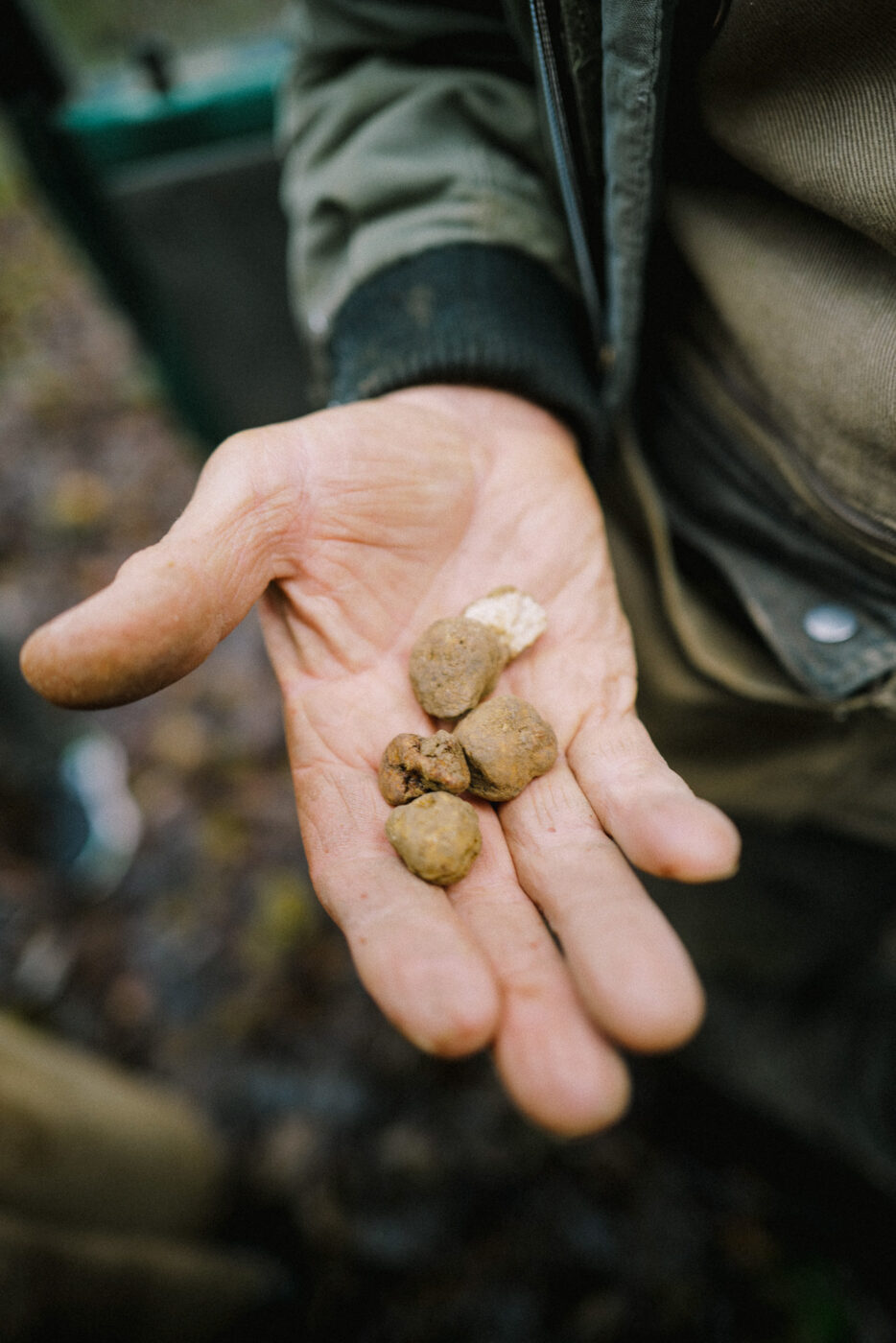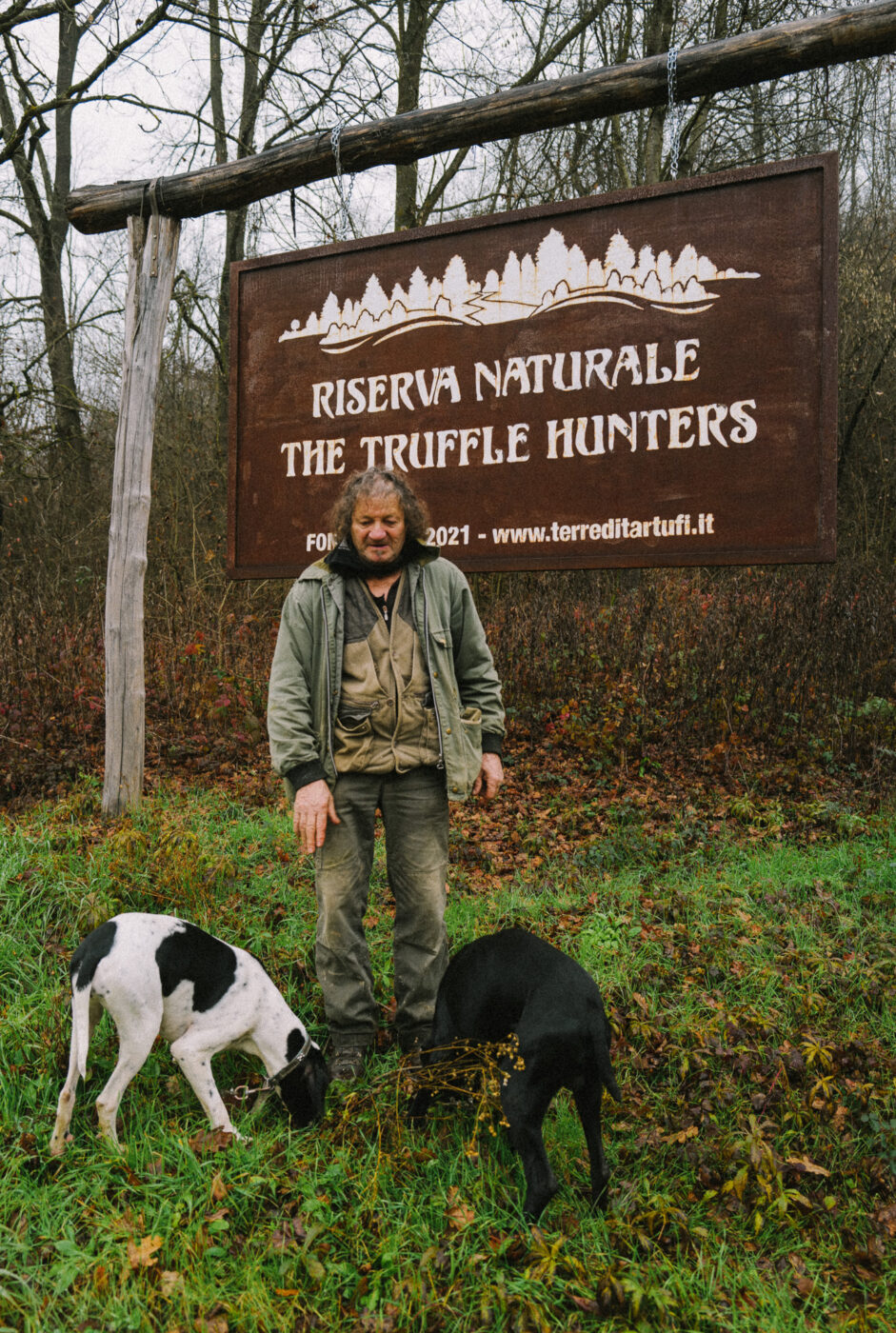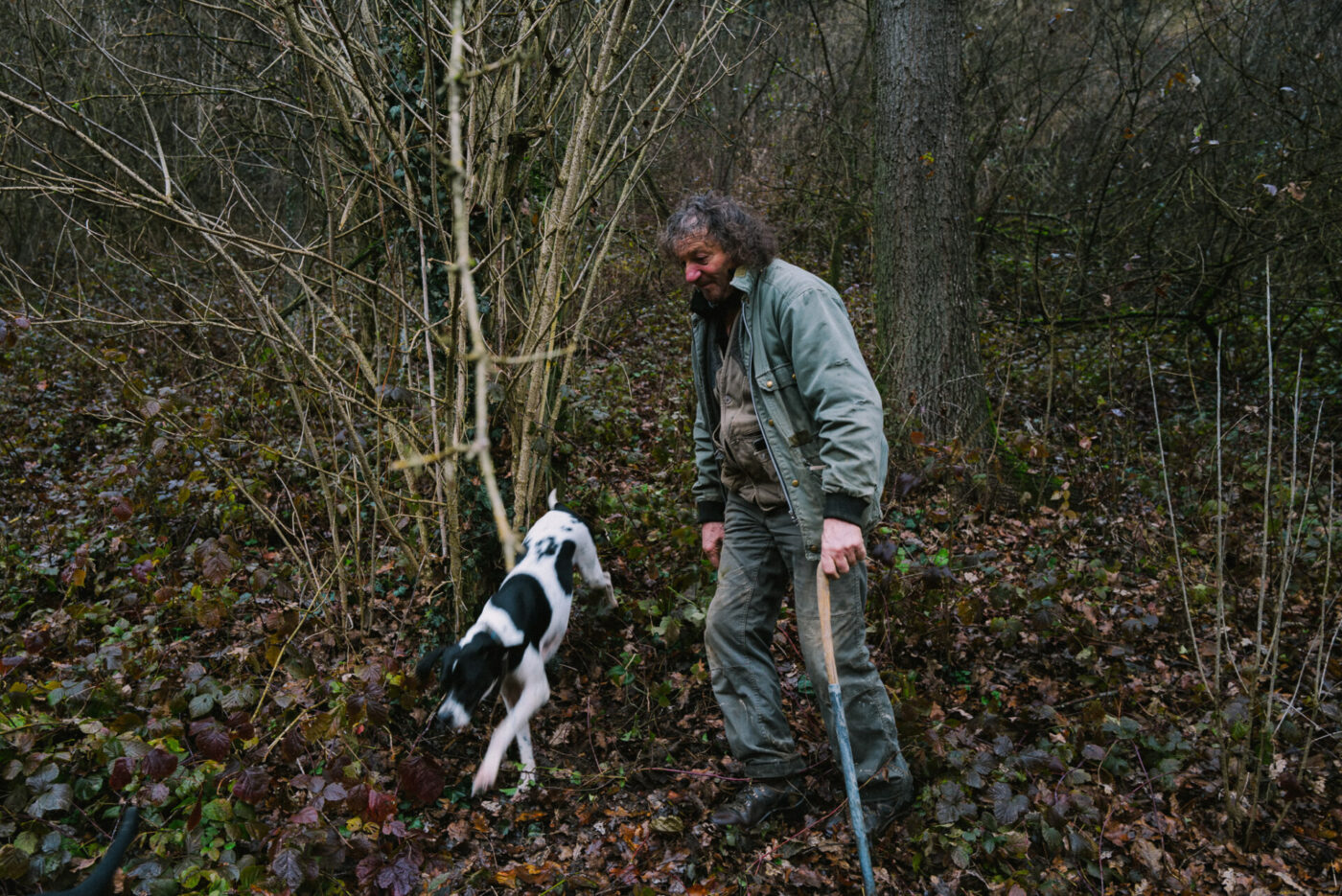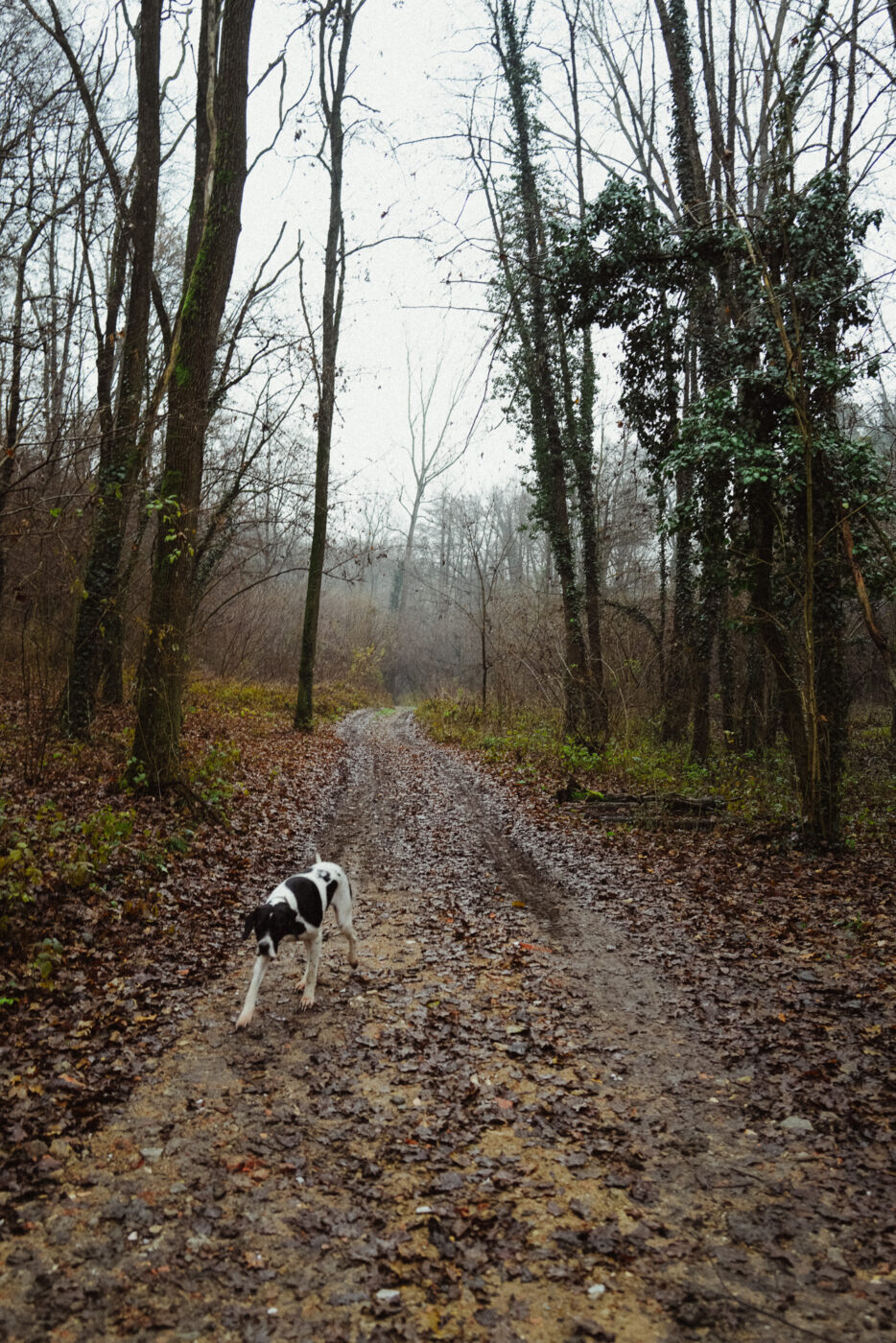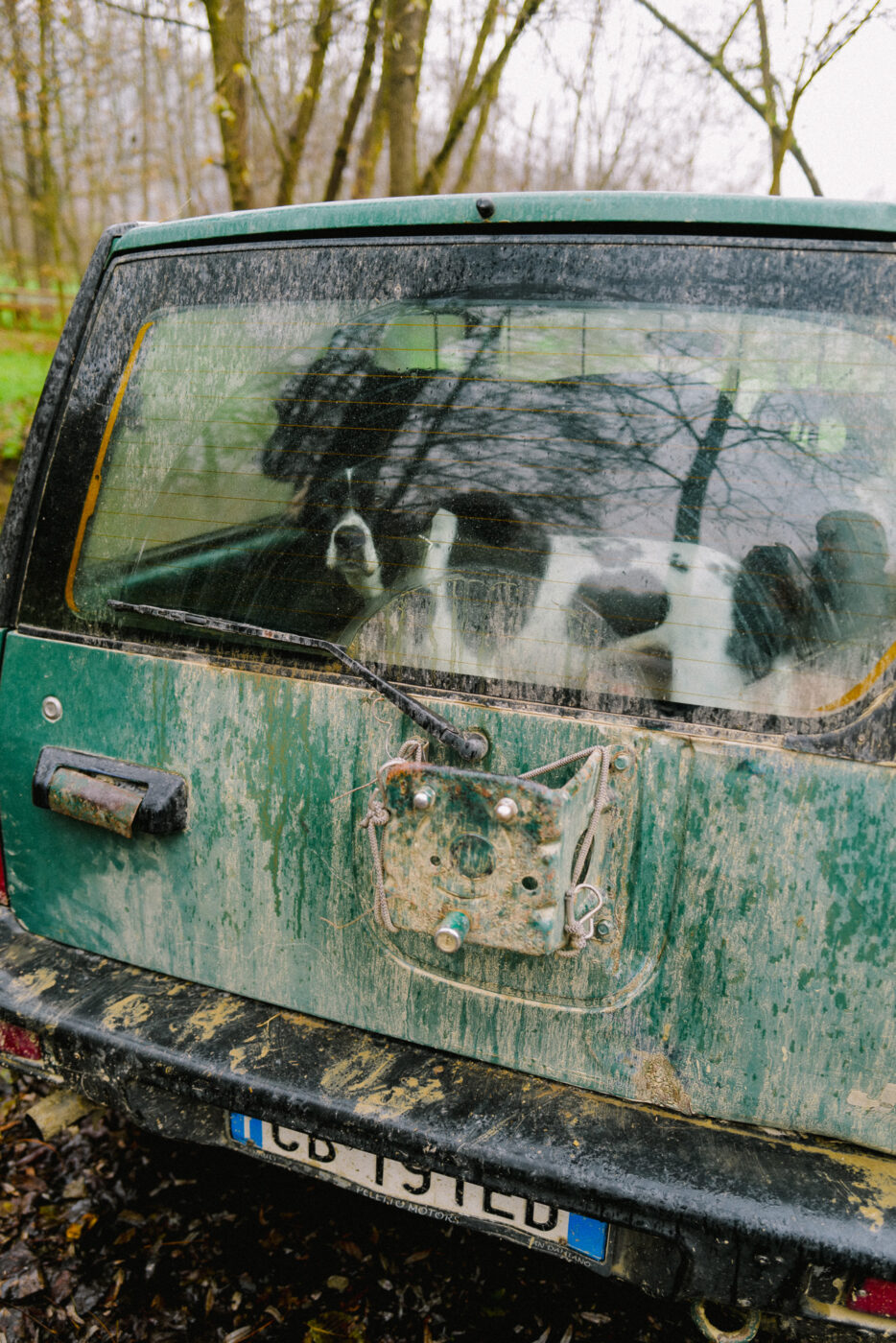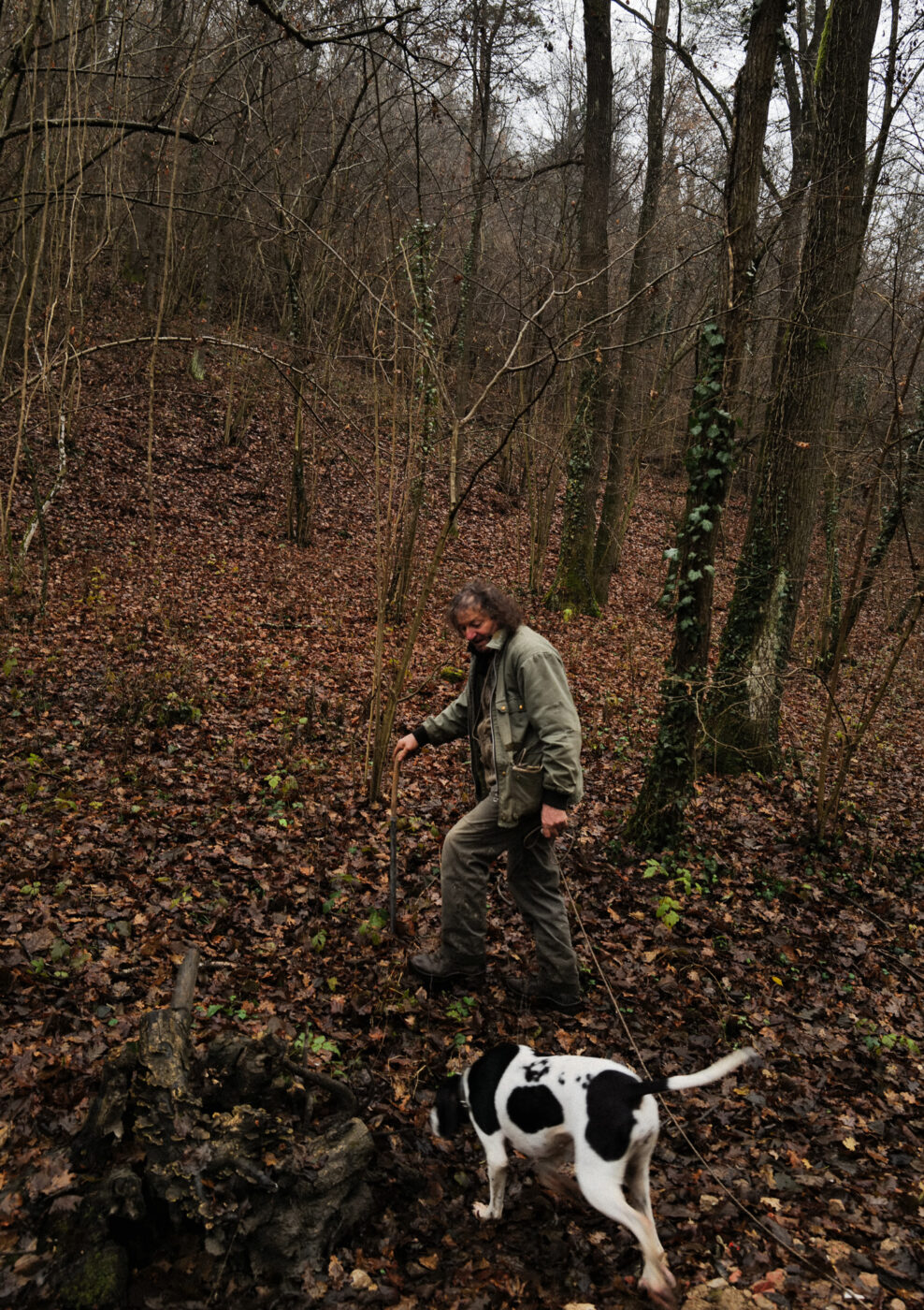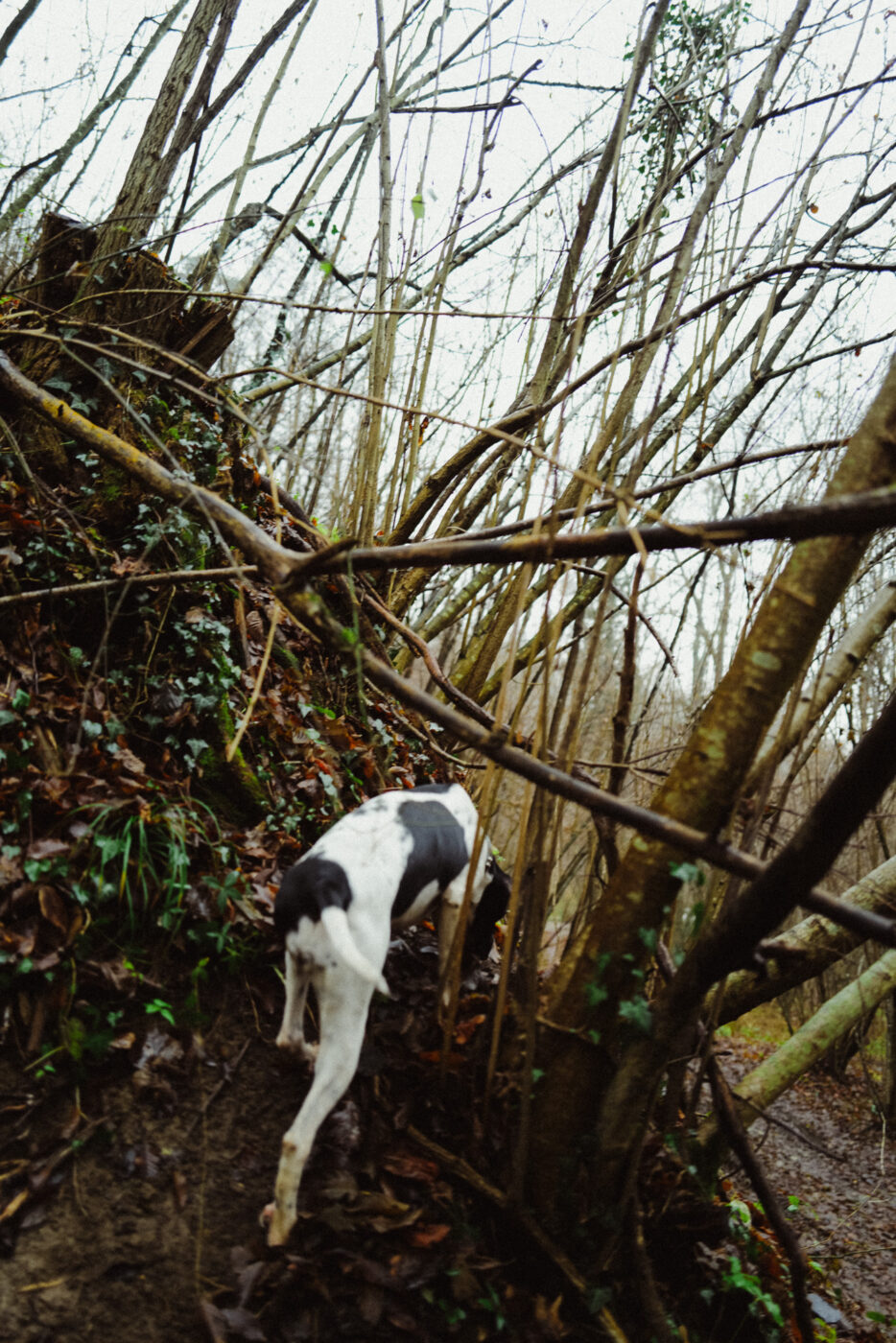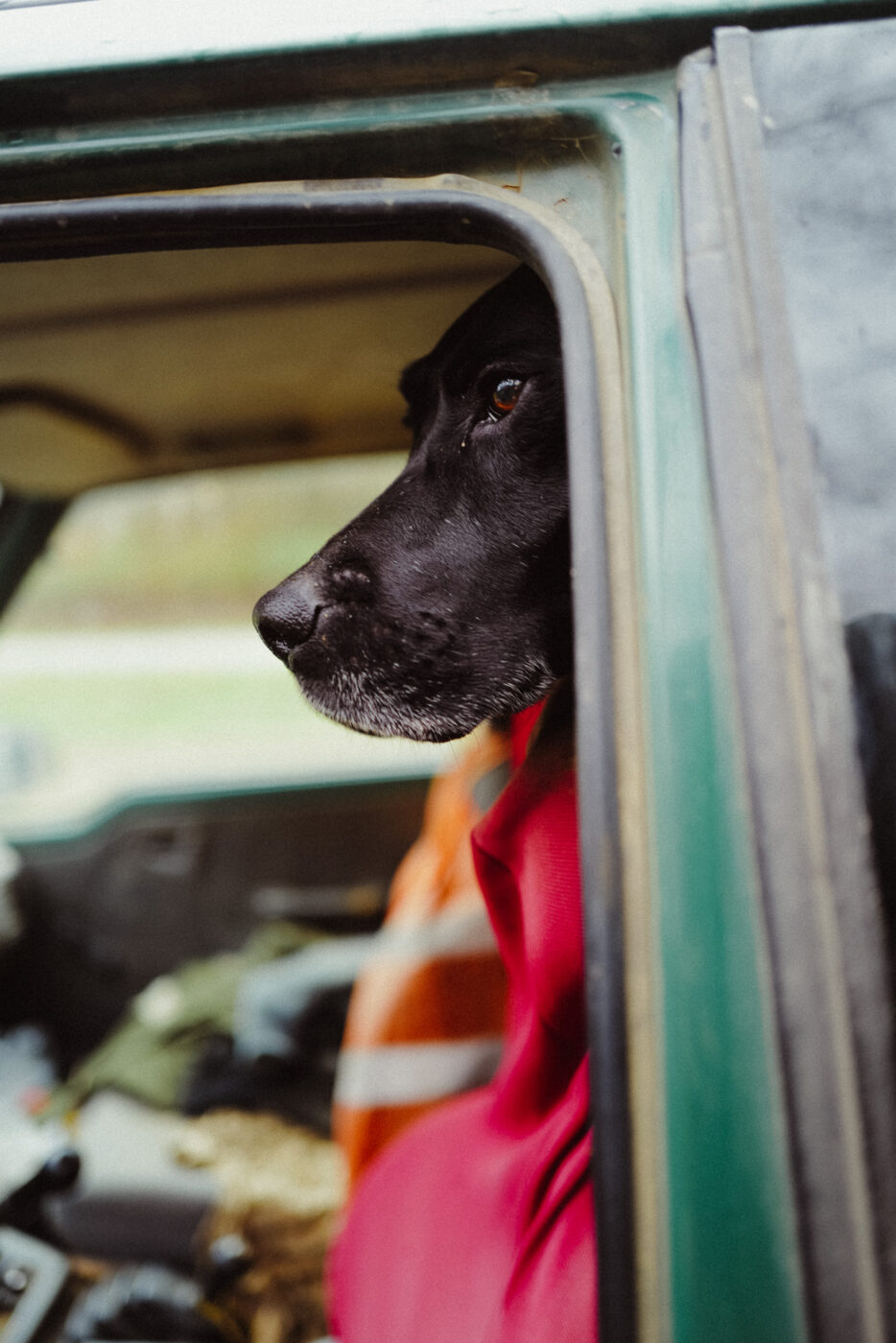“Oggi mi fanno un po’ tribolare” (“Today they’re tormenting me a bit”), Sergio Cauda grumbles as he tromps through the underbrush of The Truffle Hunters Nature Reserve 20 minutes north of Alba, Piedmont. His dogs Maria and Biri–the truffle-hunting kind–are ignoring his commands of “vien”, in gruff Piedmontese dialect, taking off willy-nilly, their paws thundering through muddy puddles. Biri has just found our first truffle, digging it up with small spurts of dirt… before gobbling it up himself. “They’re young, and they’ve never been on a hunt with others before,” Sergio explains apologetically.
The pointer mix is not the only one with a taste for the finer things. Shaved over pastas, risottos, eggs, and even ice cream, mixed into oils, sauces, and salts, truffles are the holy grail of gastronomes the world over, with the market poised to reach a value of $2.4 billion by 2034, per Global Market Insights. By weight, the Tuber Magnatum Pico, Alba’s white variety, is one of the most expensive foods on the planet, their cost compounded when served in fine-dining restaurants, and this part of Piedmont is prime territory for them, renowned for their rarity and distinct aroma and flavor–earthy, garlicky, reminiscent of aged cheese or roasted nuts. Harvested only from late September to December, the white truffle’s season is celebrated annually with the Alba White Truffle Fair, where the “diamonds of the earth” fetched up to €4,500 per kilogram in 2024. The same year, a pair of white truffles–“twins” attached to the same root–weighing a total of 905 grams sold for €140,000 to a finance magnate from Hong Kong. The whole thing–the fair, Michelin-starred menus centered on the tuber (like the eight-course one at Alba’s Piazza Duomo, €290 per person plus the cost of the truffle), truffle hunts marketed as experiences–has become one of the region’s largest draws.
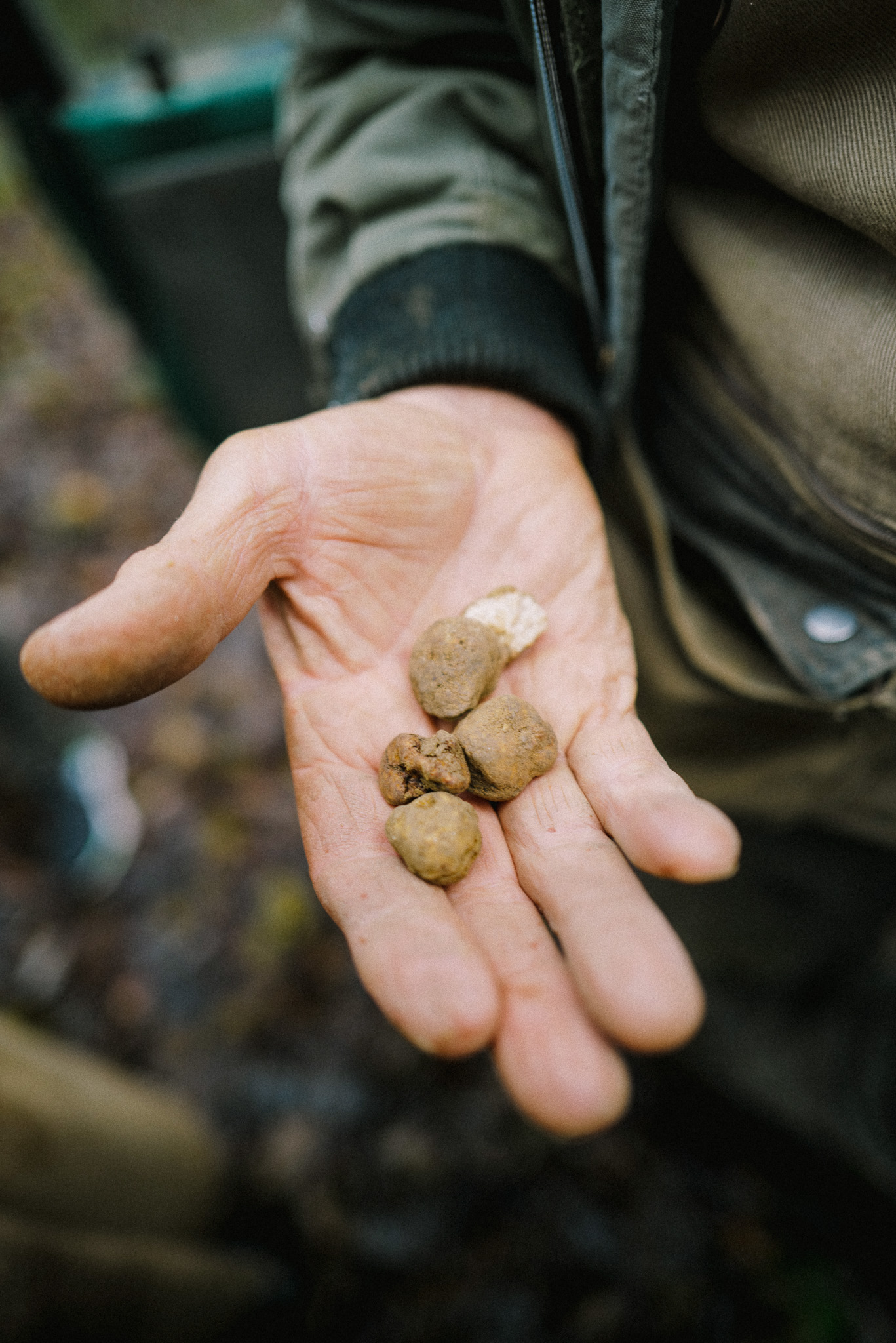
It’s an industry that rests on the backs of Piedmontese like Sergio, 73-years-old, and his contemporaries: the trifulau, a wily group of seventy- and eighty-somethings that are the subject of the 2020 documentary film The Truffle Hunters, produced by Michael Dweck and Gregory Kershaw. Following the elderly foragers over the course of two or so years, the doc is an intimate look at the enigmatic world of those in pursuit of the coveted Alba truffle–their profound bonds with their loyal dogs, the rituals of their craft, their quiet defiance of a vanishing way of life. The cinematography is stunning, with static, meticulously framed shots that create compositions reminiscent of classical paintings–save two GoPro sequences of Sergio’s dog Fiona catapulting through the forest, her sniffs coming through in breathy bursts.
My colleagues and I find Sergio through the Associazione Tartufai del Monferrato, which gives us the contact of truffle hunter Beppe, who, in turn, sends us that of “Il Batterista” (“The Drummer”) along with “un abbraccio” (“a hug”) from his dog Ziggy. Sergio is so nicknamed for his pastime, and played in numerous local rock bands before “putting music aside” to dedicate his twilight years to truffle hunting. In the doc, it’s a passion that comes through as he bangs on his drum set to an imaginary (or not-so-imaginary) audience and belts in the car and in the bath, washing himself together with his dog Fiona before blowdrying her fur. “I love Vasco Rossi,” he effuses to us. “I’ve seen him in concert four times.”
His hair is slightly thinner and greyer now, but Sergio’s spirit remains puckishly youthful. He’s spritely for his age–a characteristic that both comes from and is required for truffle hunting, it seems. “Truffle hunting isn’t just a hobby—it’s a way of life. I wake up early, sometimes at 3 or 4 in the morning, and head out to the woods,” he says. He first started pursuing the elusive tubers as a curious kid, when he and his classmate Tonino followed an elderly hunter who would pass their school on his daily route. “Sometimes, I’ll be out all day, walking for hours without finding anything. But then, in the right spot, we might uncover a treasure trove of truffles. Experience is everything—you have to know where to look, how to read the land, and when to trust your dogs.”
Sergio hunts truffles year-round, braving all conditions, day or night. From October to January, he searches for the treasured white truffles. February to April brings bianchetti, a less celebrated but flavorful truffle found under high-elevation pine trees. Afterward, from May to June, he turns to moscato, the small black truffle, before shifting to summer black truffles, which dominate the season from June through September. (The latter variety–more plentiful, as well as farmable–is less prized and costly than its brethren.)
“It’s physically demanding. It’s tiring. The cold and humidity cause a lot of aches,” Sergio laments. A few days before our hunt, he calls to say he’s come down with cervicale, neck pain or inflammation that (rather mysteriously) can be caused by wind or humidity to the throat. He usually wears a bandana knotted around his neck as a safeguard. A doctor in Turin has, happily, sorted him out the day before we meet.
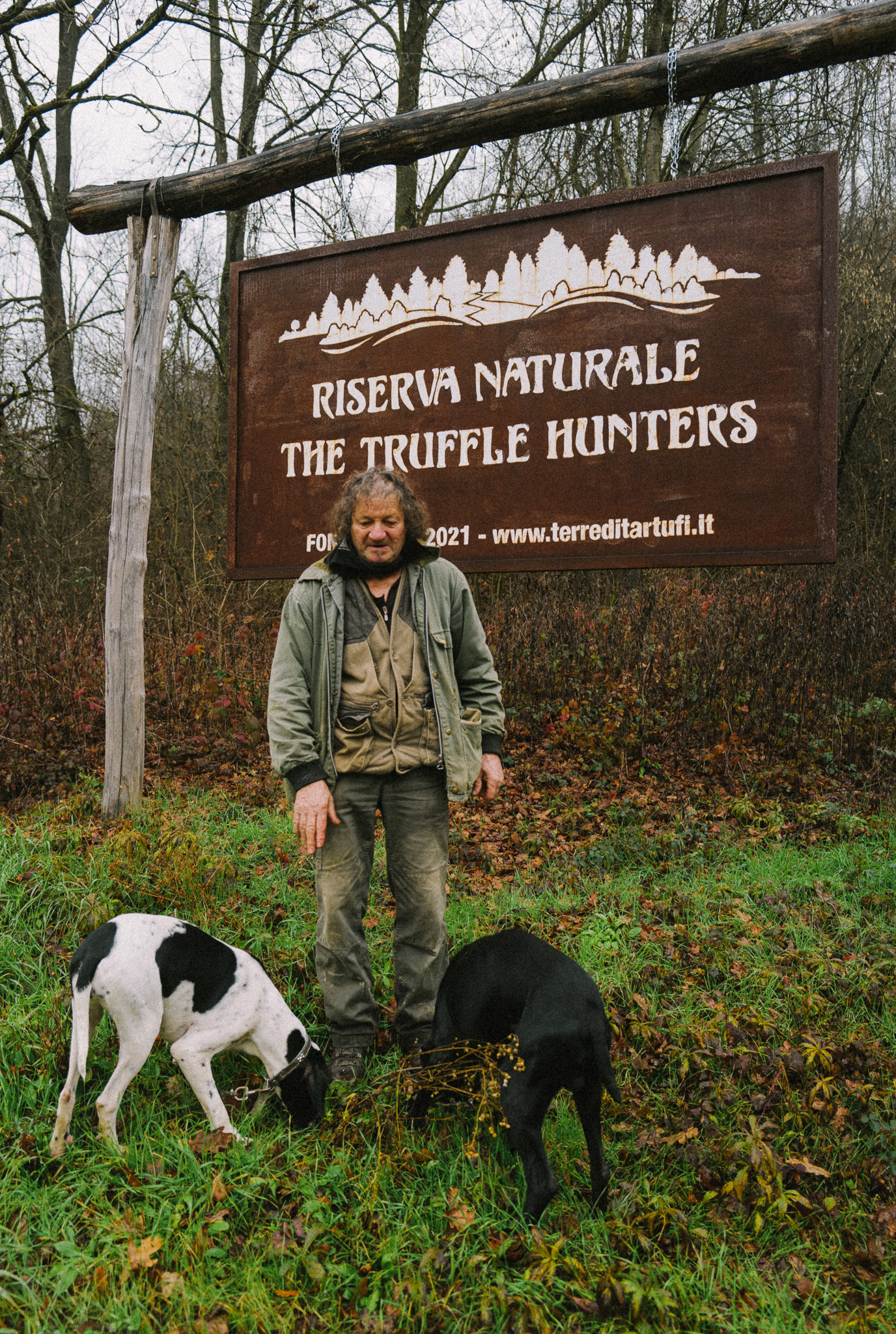
The 87-year-old Carlo Gonella, another protagonist of The Truffle Hunters, is a particular fan of night hunting (despite his wife’s constant protest), when he claims he can hear the owls and which seems to be the activity that keeps him young. When he goes to the doctor after walking into a branch one night, he assures the medic, “When I slip, I get right back up.”
“Do you feel your arms and legs are still strong?” the doctor asks, to which Carlo replies, “Yes, I do. I walk faster than the deer!”
But, even beyond the physical strenuousness of the work, the true picture of truffle hunting–that becomes clear both in the doc and from our walk with Sergio–is a far cry from the romantic one you may have in mind.
Excuse the pun, but this is a dog eat dog world.
In recent years, the truffle hunters’ way of life has increasingly come under threat by–as multiple members of the group reiterate over the course of the film–greed. Market forces and the increasing commodification of something as ineffable as scent and taste has attracted some, dare I say, seriously evil forces that exploit the land, the hunters’ far-from-modern business methods, and even go so far as to attempt dogslaughter. And that’s not to mention the black market, which the film largely passes by and which sees imitations and lower-quality truffles, often sourced from other regions or species, falsely labeled as Alba white truffles.
“There are too many greedy people. They don’t do it for fun, or to play with their dogs, or to spend some time in nature. They only want money,” Angelo Gagliardi, the most miserly of the trifulau, pens in a letter to friends in The Truffle Hunters. Earlier in the movie, hunter Aurelio Conterno recalls when someone tried to buy his dog Birba. “I said that I would never sell her. He then took out the checkbook and said he would give me a blank check. Oh, boy. That is a very good offer,” he recalls. “I said, ‘Have you got family?’ He said he had a wife and two kids. I told him to come back tomorrow, we could talk it through. He was very happy, and the following day he comes back. He told me again he would give me a blank check and I could put any amount on it. I asked again, ‘Have you got any children?’ [He] said yes. Then I said, ‘Let’s make a contract. Come back tomorrow. I will go to the bank and withdraw 50,000 euros in cash. Then, will you sell me one of your children?’”
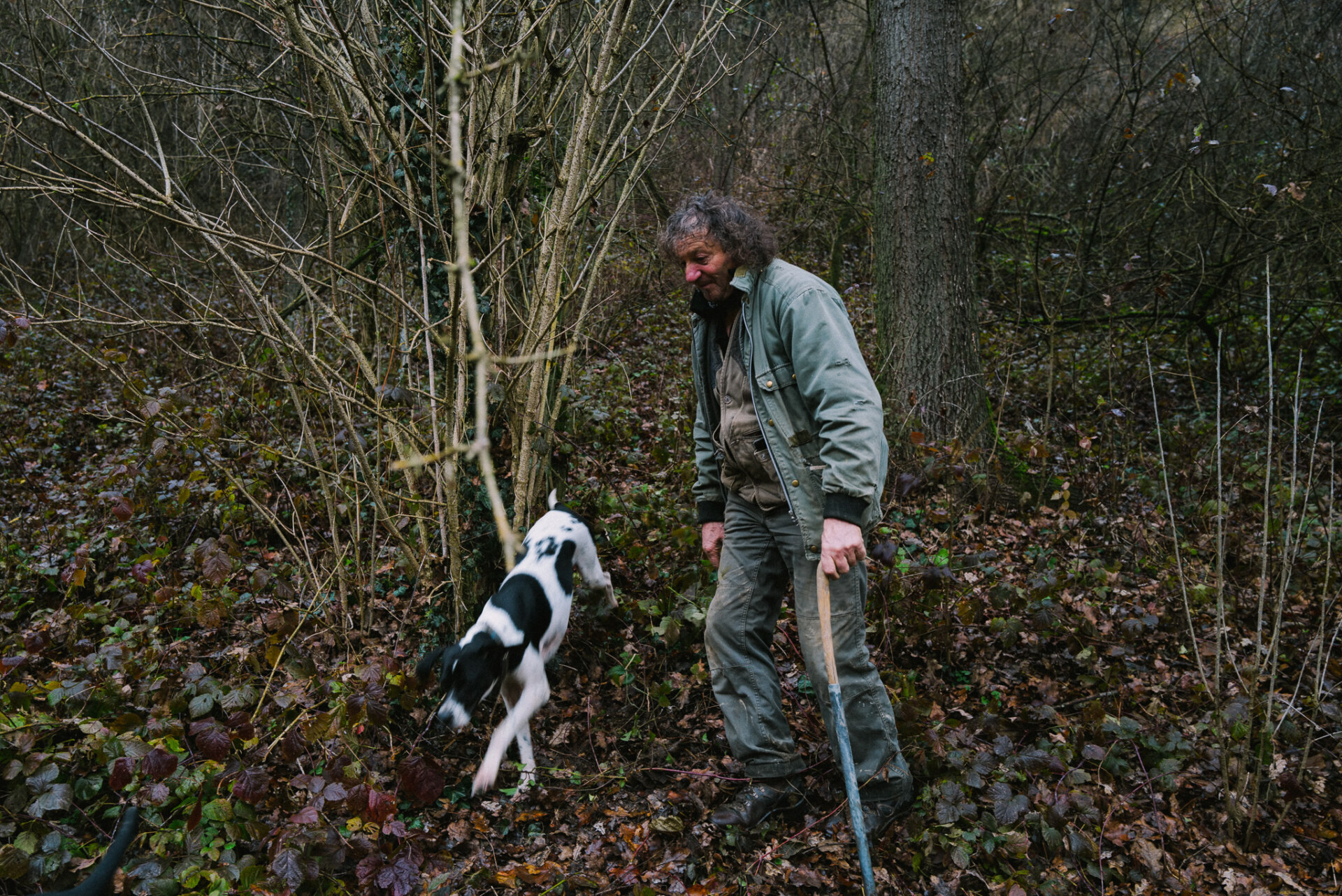
Though the truffle business is one of the most lucrative in the gastronomic world, Sergio and his crew aren’t in it for the money, and the lives they lead are by and large humble, provincial ones. In The Truffle Hunters, they sing folk songs, eat on messy wooden tables, and wear earth-toned forest gear–beautifully charming and quietly chaotic, and the perfect foil to the sterility of the starred restaurants where their truffles are consumed, the diners in tailored suits and ballet pink cardigans. What they’re in it for is the joy of the hunt–joy that’s shared by humans and hounds alike.
In a leitmotif of The Truffle Hunters, Carlo’s wife berates him for hunting at night. “You might fall and hurt yourself,” to which he replies, “But if I fall, it’s my pain.” When she calls him to come home, Carlo’s response is as blatantly disobedient as Maria’s and Biri’s. At church, he asks the priest what’s next for him. “I’m sure that you’ll keep on hunting truffles.”
“In the afterlife too?”
“Of course! Because this is your passion, with which you also help the people.” I’ve never seen a toothier grin. In the last scenes, against his wife’s wishes, Carlo sneaks out of his window in the wee hours of the night like a rebellious teen, taking up Titina’s leash, and heading into the forest.
The dogs, too, love what they do. “[They’re] in it for the fun,” Dweck and Hirshaw told The Bark, explaining that the hours and hours of GoPro dog cam footage “[put] you in the visceral intensity, the thrill of the hunt, the excitement of digging up a truffle.” Sergio echoes, “When we’re hunting, they work tirelessly, often for hours on end.” And not without fair pay. “They love cuddles and ‘brava, brava’,” he says, and, as Maria and Biri circle back for the treats he pulls from his pocket, “They work for the tip.”
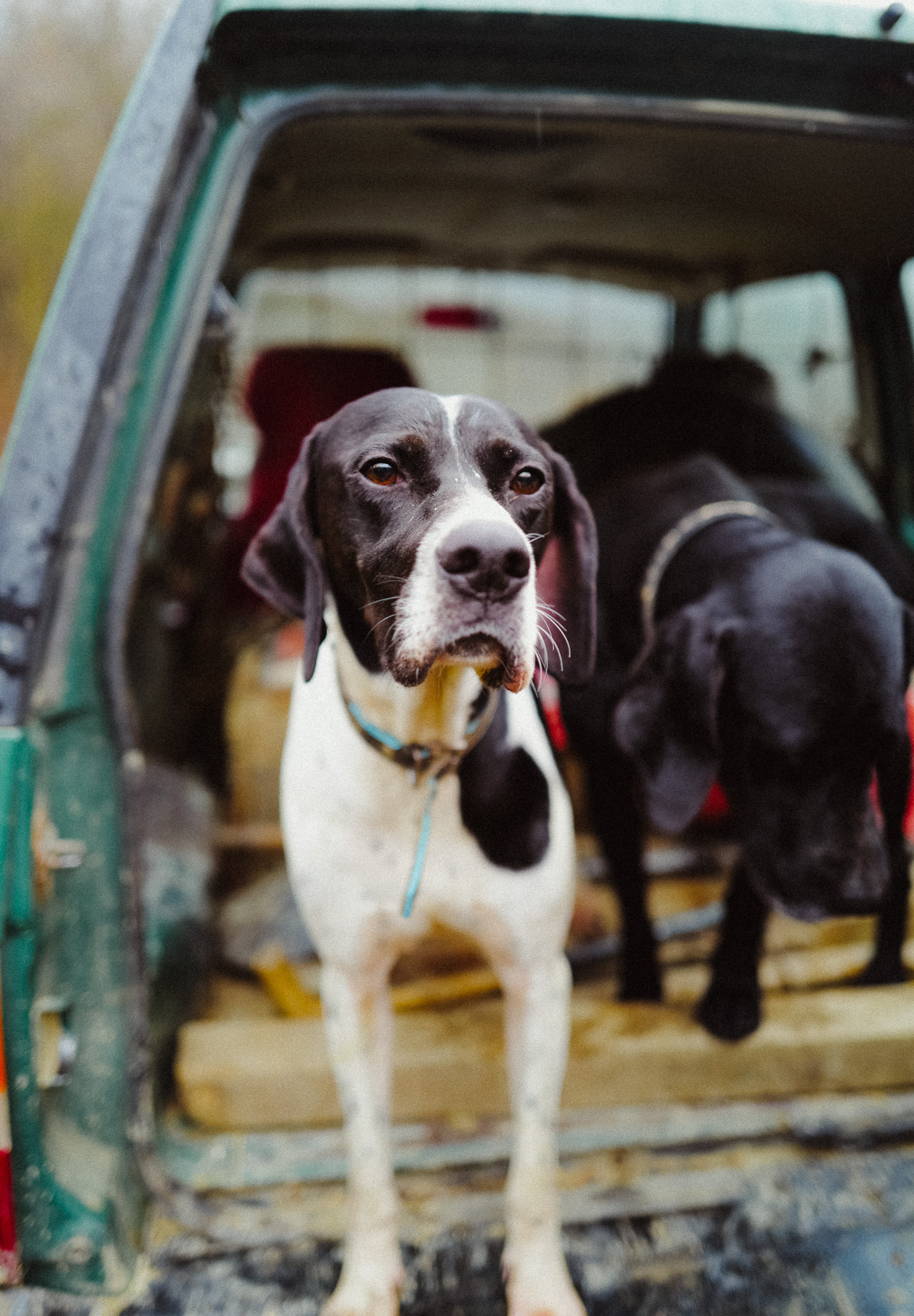
It probably goes without saying that, to these truffle hunters, their dogs are more than money-making machines, filling the roles of children, wives, best friends, business partners. If you thought the whole “dog daddy” business was a millennial invention, these guys are here to prove you wrong.
“The dogs are everything. They’re like family. When we’re out hunting, I rely on them completely,” Sergio tells us. “I care for them like they’re my children. At night, I bring them inside, cover them with blankets, and make sure they’re warm.” Sergio cooks for them every night; instead of kibble, they’re chowing down on plenty of vegetables like kale and fennel, meat, and fresh pasta.
Aurelio’s relationship with Birba might be one of the most touching of the film, with much discussion between man and dog as to what will happen to her when he’s gone. “I don’t need a woman! I have Birba. She finds truffles and then I cook fondue,” he tells her. “And then we eat and we are just fine. Do you understand? You and I.” He cuts up a pear–one slice for him, one slice for Birba–with the mantra “a pear a day keeps the vet away.” Carlo’s dog Titina is blessed in church by the local priest: “May God preserve the dog’s sense of smell, which is precious and helps with the hunt. Therefore we ask for God’s blessing on Carlo and his dog.”
So it’s no surprise that the worst offense driven by the aforementioned greed–intentionally poisoning the dogs by leaving tainted bait in the usual hunting grounds–is especially devastating.
“People in this business are often jealous. When we put up signs to mark our territory, others began to retaliate,” Sergio explains. “One day, we found poison scattered all around our truffle spots. It’s hard to deal with. Some hunters have no regard for the dogs or the land, and it’s heartbreaking to see how far jealousy can go.” Some use Strychnine, a highly toxic and colorless pesticide that, even if simply licked (rather than ingested), can kill. Sergio carries oxygenated water and salt with him at all times–which forces the dog to throw up any poison–but the drummer’s own pointer, Fiona’s son Pepe, went this way in 2023. “Training new dogs takes years, and it’s not easy to replace the bond we had,” Sergio tells us, tears springing to his eyes.
A few days later, when rewatching The Truffle Hunters, my heart starts to flutter with panic when Birba doesn’t come immediately when called by Aurelio—did she get poisoned?—recalling the days when my own spaniel would blindly run into the road.
Though some truffle hunters have chosen to muzzle their dogs to protect them from the poison, Sergio explains that the hardware changes the way they breathe and, if worn as they run for hours and days on end, ultimately shortens their lifespans.
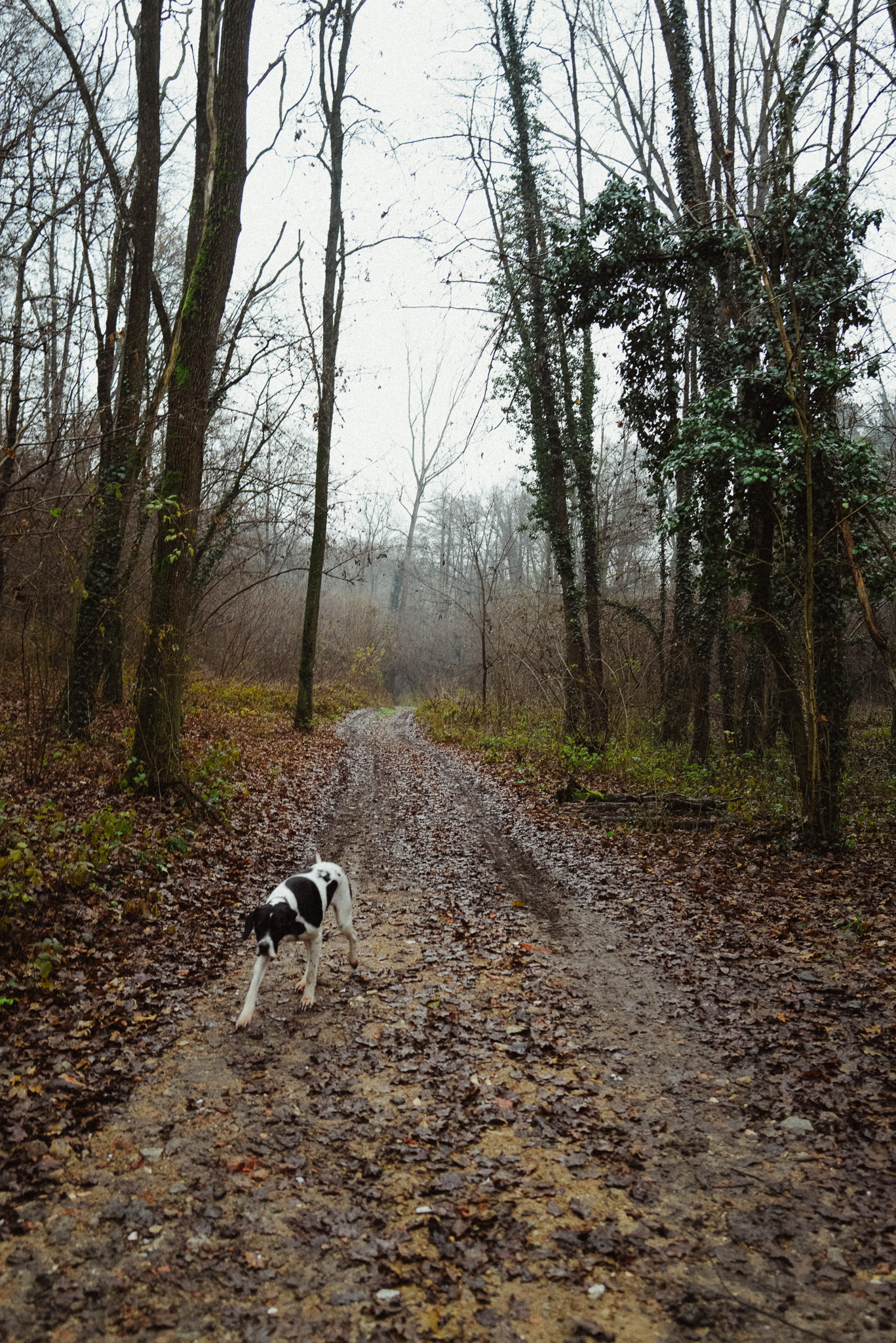
Poison isn’t the only danger for the dogs. Also in 2023, Fiona, who features heavily in The Truffle Hunters, was attacked by a cinghiale (wild boar), its tusk puncturing her lung and killing her instantly. “I have a photo of it—it’s a bit gruesome, but I’ll show you if you want,” Sergio offers, unwrapping his phone from the tired ziplock he keeps it in, protection from the dirt and humidity. Against my better judgement, I lean in to look when he turns the phone to me. It is, indeed, gruesome. “I spent months mourning Fiona. She was one of my best dogs.” Cinghiali are the reason Sergio’s long, wooden walking stick is sharpened at the end.
“Every dog has a story,” Sergio tells us, referring to near misses and close encounters of various kinds.
Yet, as the stakes rise, so too does the hunters’ effort to protect their knowledge, their territories, and the future of truffle hunting. Their community remains bound by an unspoken code: the secrets of the hunt must stay sacred.
“When we first started hearing about these truffle hunters, it was in whispers,” Kershaw revealed to The Bark on the challenge of penetrating this world. The real hunters, not the ones staging gimmicky tourist hunts, hold their knowledge like an heirloom—shared only with their dogs, their closest confidants. “It took years of trust-building and two years of filming before we were allowed to see where the real truffles were found.”
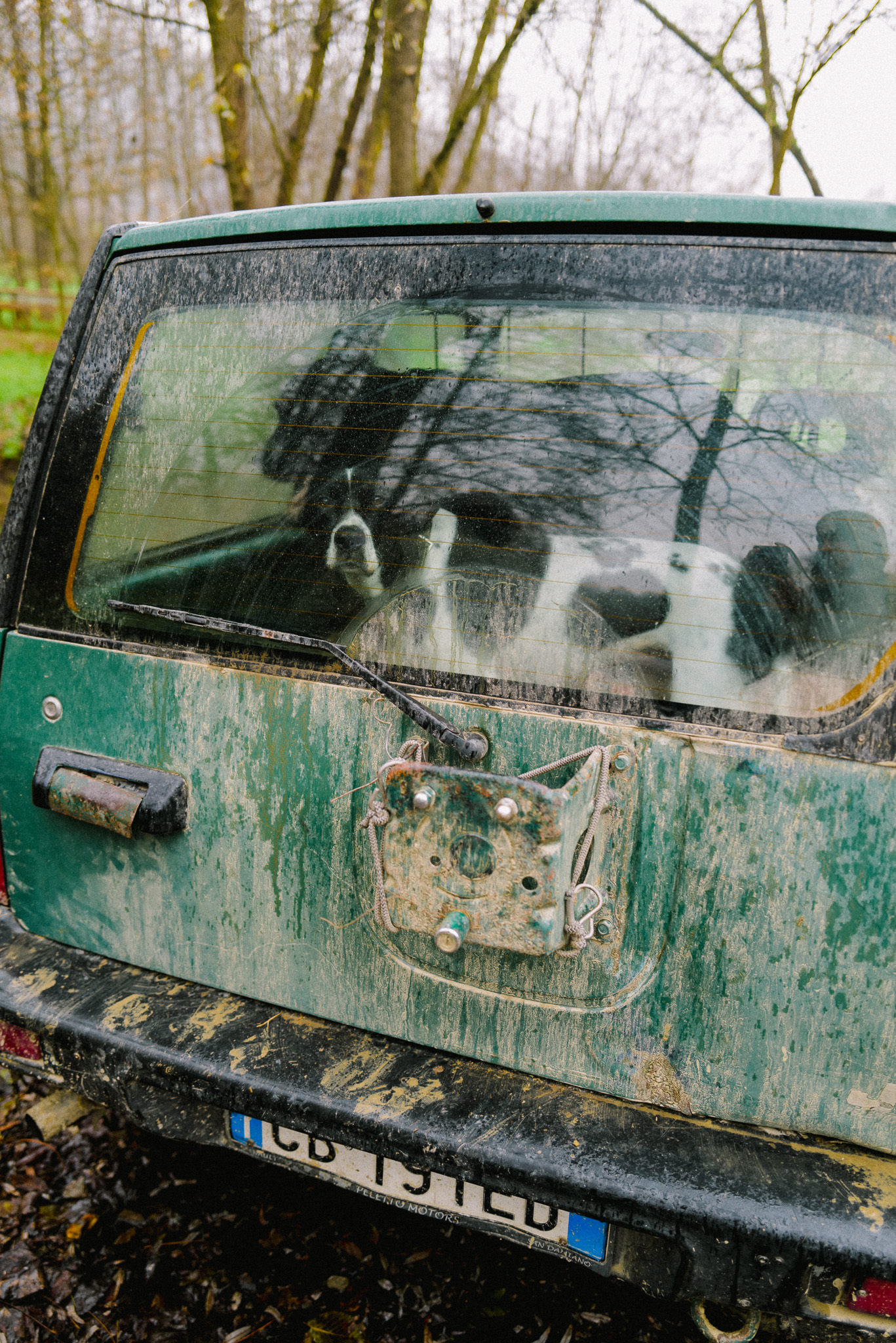
Gatekeeping is a matter of survival. Sergio reminisces about the time when disputes over hunting grounds were common. “There was a mechanic who sent his wife at 5 AM to hold a spot for him because he worked during the day. The truffles would typically emerge between 8:30 and 9 AM,” he recounts. “We’d look at each other, wondering what to do. It wasn’t fair. You can’t block a spot and not let others hunt.”
Such rivalries spurred Sergio and others to establish the non-profit Terre di Tartufi association and the The Truffle Hunters Nature Reserve, where we meet Sergio on that dreary December day, with funds from the documentary producers. Together, the so-called “group of friends (truffle hunters, naturalists, farmers, doctors, engineers, entrepreneurs, photographers, and writers)” purchased a 20-kilometer reserve, with the goal of protecting the fragile forest ecosystems and reclaiming land at risk of deforestation; for €30, you can adopt one of their trees. The association has also instituted regulations to safeguard their land from outsiders. “Now, with the society, we have rules, and we take turns,” Sergio explains. Each of the 10 truffle-hunting members has an assigned time slot, ensuring fair access even for those who have other jobs (one is a bricklayer, another a lumberjack) and preserving the delicate balance of their ecosystem–conservation efforts, not only for the land and its truffles, but for their way of life.
Even within this trusted group, however, each hunter’s knowledge–a sort of personal folklore–is held close to their chest, and often carried to the grave. As Maria and Biri jump into the trunk of Sergio’s mud-splattered car, the mist in the air turning into a light drizzle, Sergio explains to us how he marks his finds not with maps but by the Saint of the day; a specimen found on, say, December 1st he’ll remember by Saint Ansanus. He, of course, doesn’t dig into the details.
“You have no wife, no children. You’re the best truffle hunter. Can you tell me your secret spots?” one of the distributors pleads to Aurelio in The Truffle Hunters. “If something happens to you, your knowledge would be lost. It would be a disaster.”
“Worry about yourself and your family. Don’t worry about me,” Aurelio responds. “Remember, the best thing is to find a place that you couldn’t even imagine.”
––––––––––
Shortly after the doc aired, in the fall of 2020, Aurelio passed away. “All three [of his dogs, Birba included] are being well cared for by the mayor of his village and are retired from truffle hunting,” Mary Jane Quan reported for La Cucina Italiana. “Aurelio’s specific instructions.”


